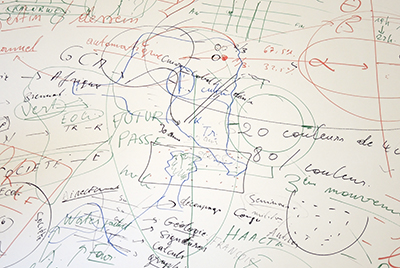27 November 2016
Uncertainty Scenarios – Session #3
Enough Room for Space, BE
Uncertainty Scenarios is a collective experimental research project that explores the ways people throughout history have tried to speculate, predict and anticipate the future and different attitudes that go along with this.
The project creates a common ground for a group of artists that all share interest in the concerns of the project and aims to establish a context for the development of new works. Together we reflect on possible consequences of current global socio-political or ecological issues and question our position as artists towards these.
Participants of Session #3: Sol Archer, Maxime Bondu, John Ryan Brubaker, Amelie Bouvier, Marjolijn Dijkman, Elias Heuninck, Sofia Lemos, Pierre Rubio, Maarten Vanden Eynde.
On the 29th of November we hosted Uncertainty Scenarios - Session #3 at the ERforS, a gathering of people related to the project Uncertainty Scenarios with a contribution by John Ryan Brubaker, Sol Archer, Sofia Lemos & Elias Heuninck, and Maxime Bondu.
Image above by John Ryan Brubaker:
On Confluence - Walks down the North Fork
The North Fork Blackwater River runs past Thomas, West Virginia before joining the Blackwater proper in the canyon downstream. Thomas developed as a coal town in the early 20th Century, but as the mines were abandoned they filled with water which continues to drain into the river today. The mine void currently covers 1100 acres and discharges an average of two million gallons of water per day into the North Fork. The drainage has a pH in the 3.0 – 5.0 range and contains heavy concentrations of iron and aluminum. This water dissolves heavy metals and creates acid mine drainage, which is detrimental to river ecosystems, rendering them generally unfit for life, recreation or consumption.
The images in this project were shot during a number of walks in and around the North Fork. As most of the river is difficult to access the process required walking through the riverbed directly. The prints were made using an iron-based photographic process called the Van Dyke Print. This process uses acidic water as its developing agent, making the contaminated portions of the North Fork an ideal location for creating prints. The works in this exhibition were processed directly in river water affected by acid mine drainage and have absorbed traces of the same heavy metals and mine runoff as the North Fork Watershed itself.


